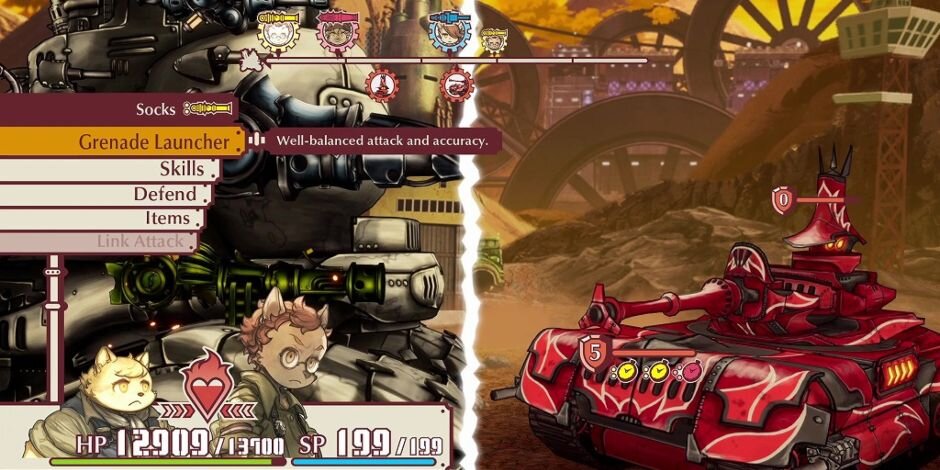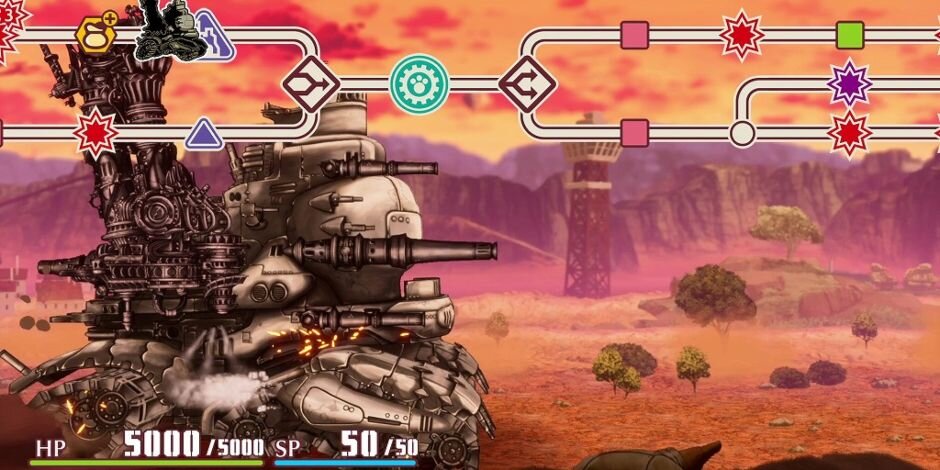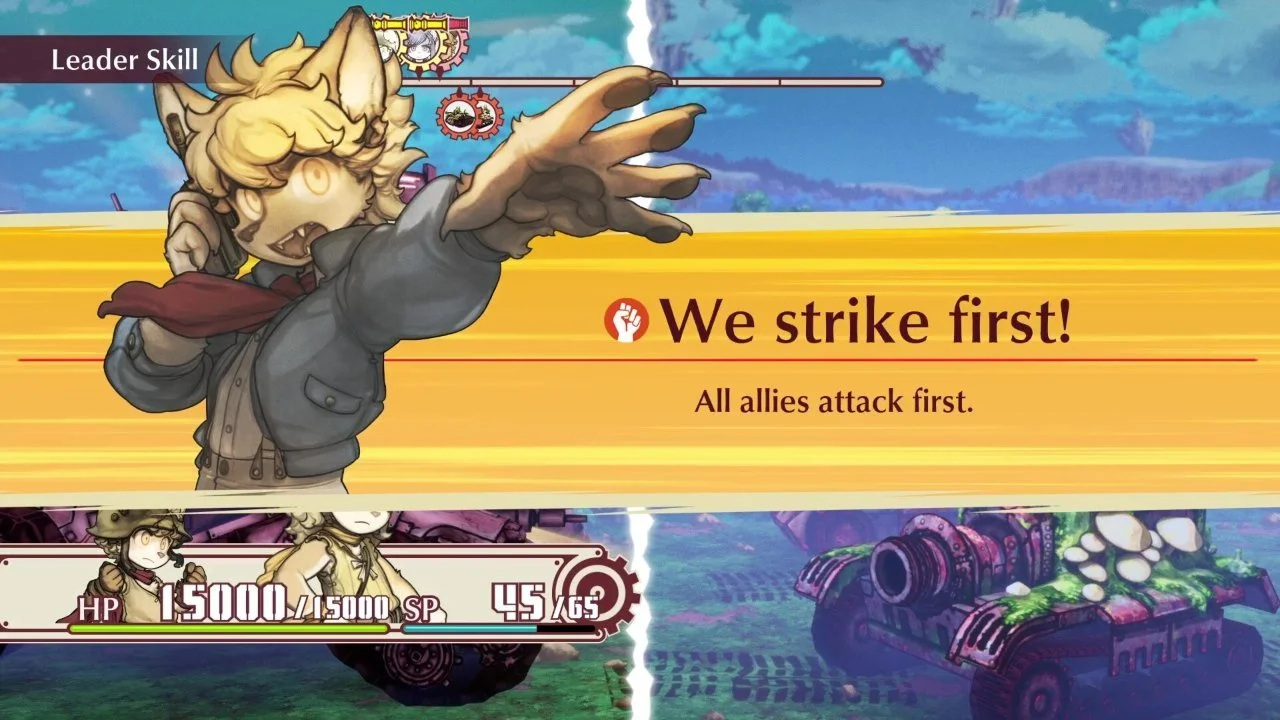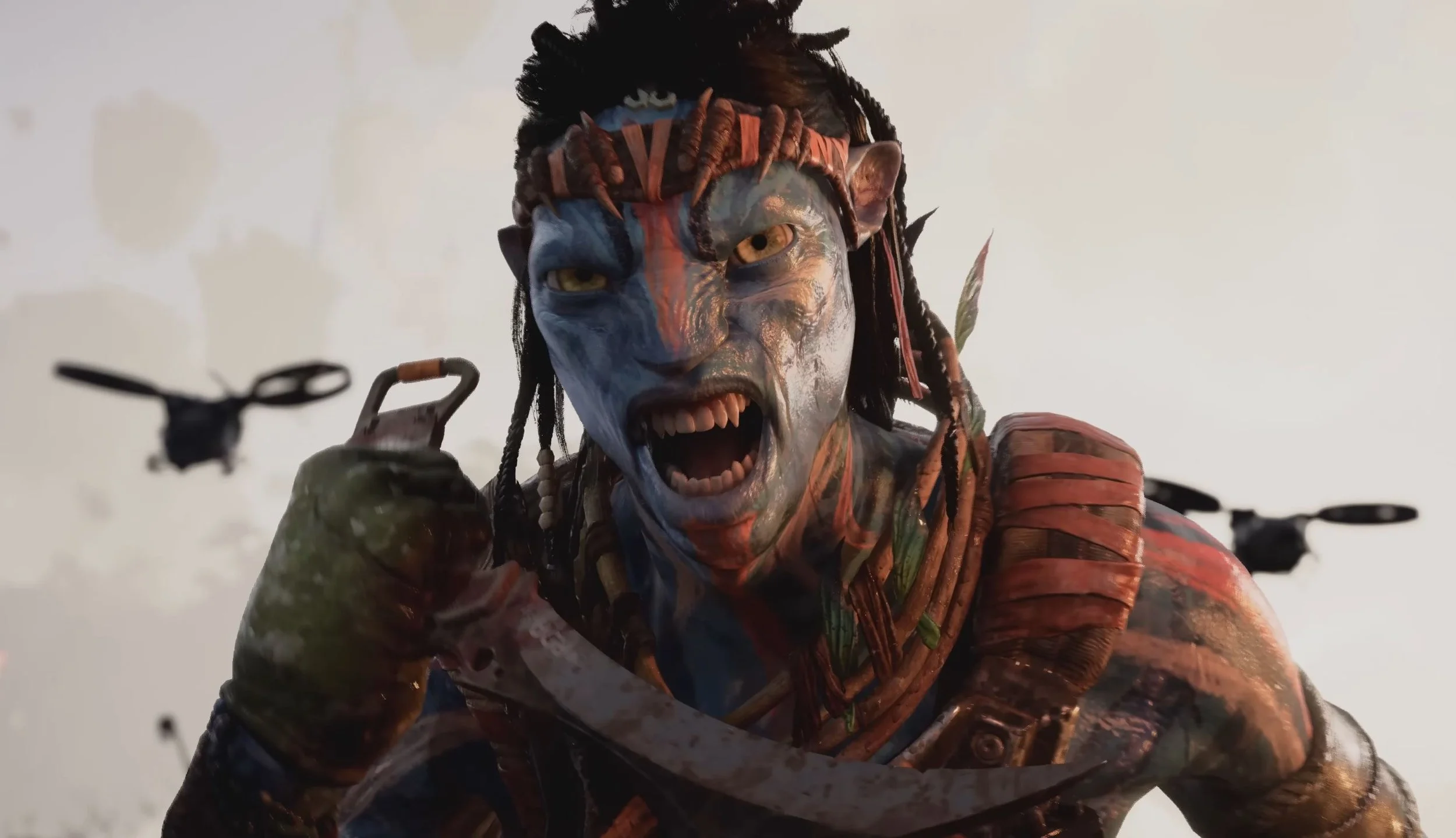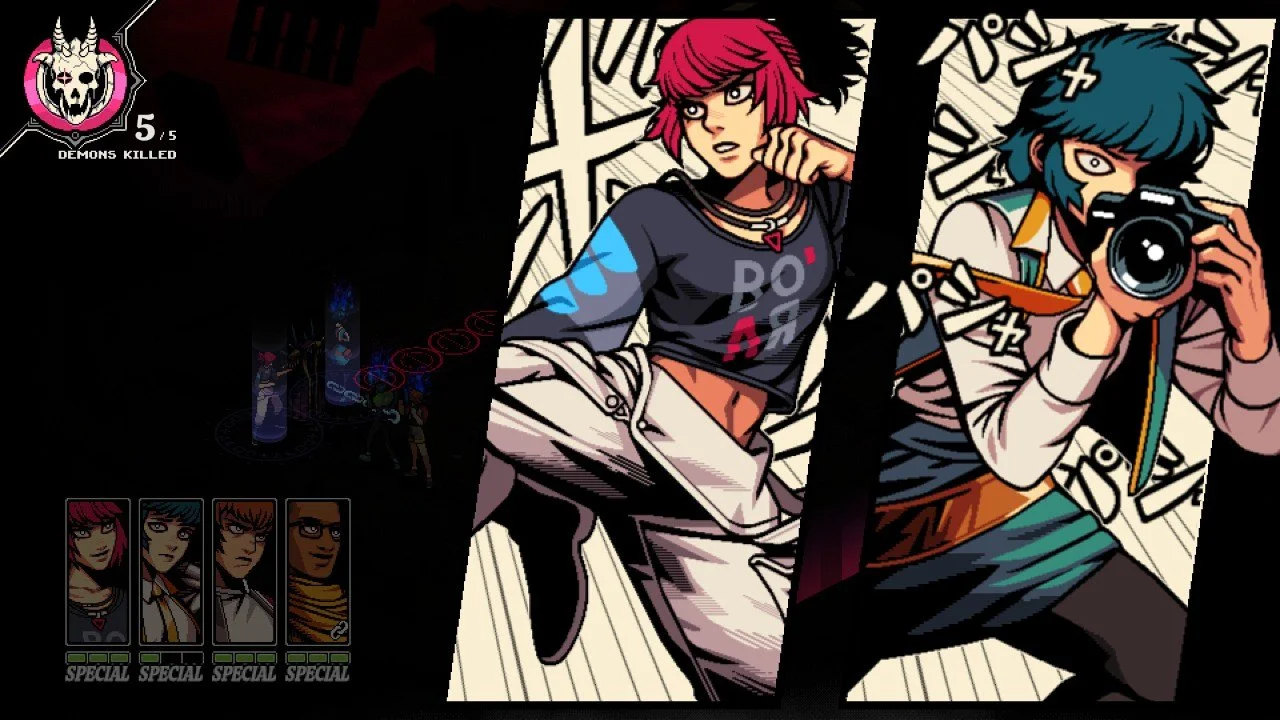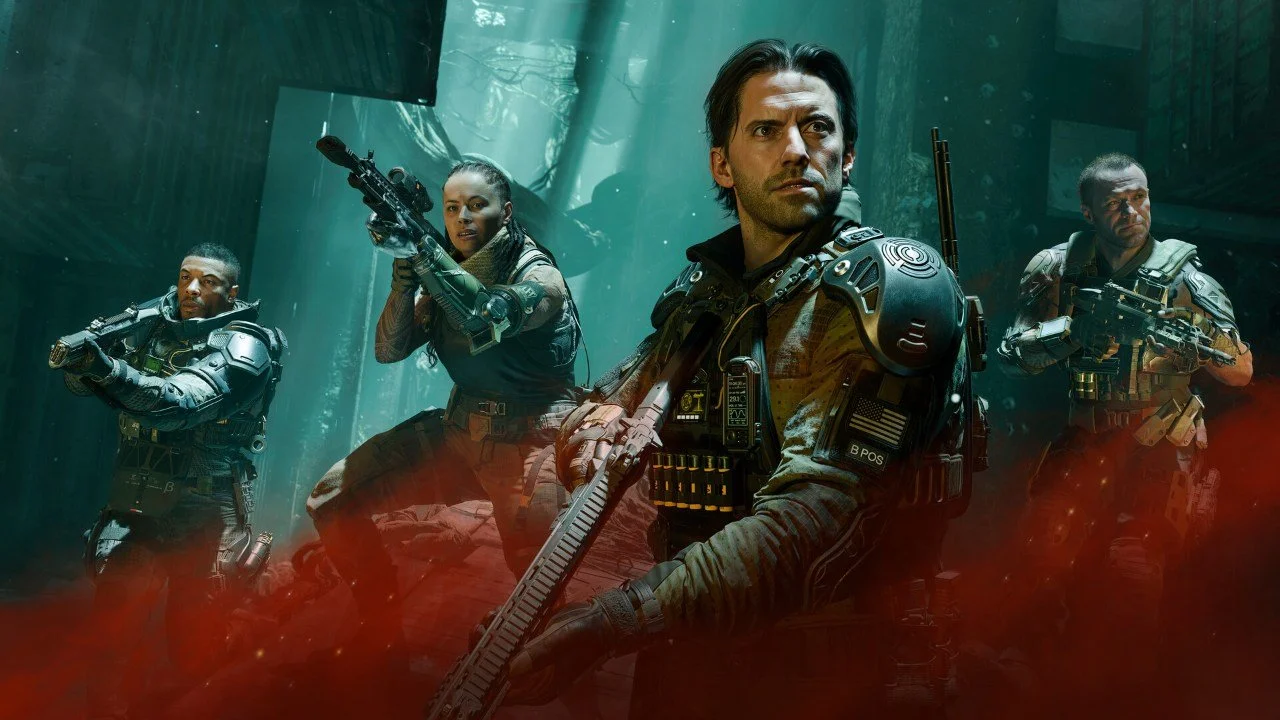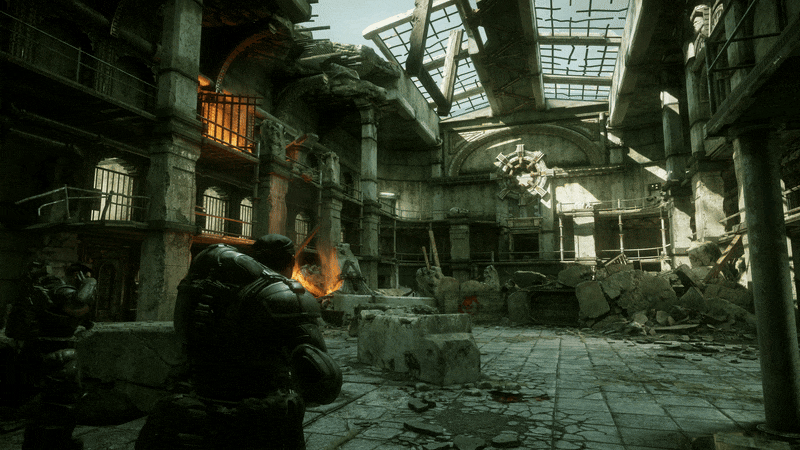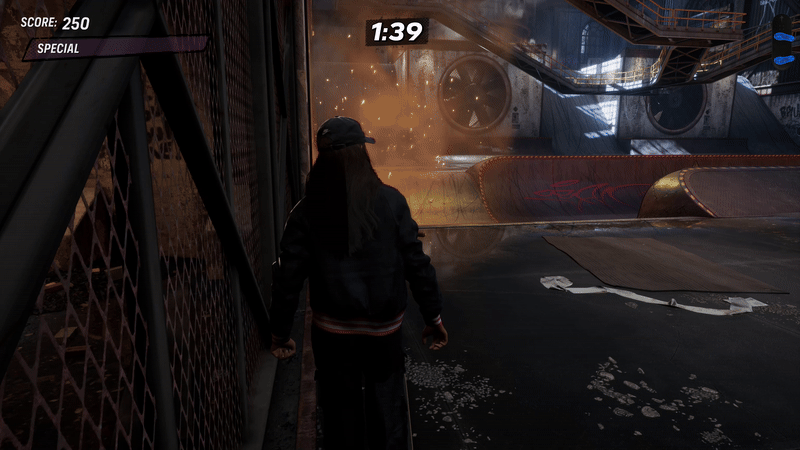PC Review Code Provided by CyberConnect2
For the first time ever, CyberConnect2 has stepped away from their usual partnership with a publisher and decided to self-publish their first game. This game is Fuga: Melodies of Steel, a new title in the Little Tail Bronx series. Giving players full control over the strategy behind building up their resources, defenses, managing a teams levels and happiness, all while fighting against an army in turn-based combat, they have created an interesting challenge. In the end, the real question here is whether or not their first solo-published title is a success? To answer that, let’s break it down.
Story
Living in a small quiet village, many families have only ever known the peaceful life. That is until the day that Berman soldiers invade the village and round everybody up! In the face of this adversity, and by the guidance of a mysterious voice through the radio, only a handful of kids managed to make their way out of the village in time to avoid capture.
Following the guidance from the mysterious voice that saved them, they find an ancient weapon called the Taranis. With this super tank, the children set out to fight back against the Berman army and save their families! But will sheer willpower and teamwork between a group of kids really be enough to take down an entire army?
Gameplay
Starting off, the game introduces you to the main two aspects that will consist throughout the game. These are the combat moments, which are turn-based and consist of a variety of options, and the chapter pathway. This pathway is pretty straightforward and basically offers the player the choice on how they want to proceed through the chapter. Most of the time there will be two paths, sometimes three, but the difference in them is shown to the player and they are labeled as Safe, Normal, and Dangerous. Ultimately, these pathways follow a “high risk, high reward” style system.
As for the combat, you have what you would expect from a turn-based RPG. There is the standard attack, skill options, defend, and items. There are plenty of intricacies here though as the skill list will grow as the characters level up. Also, each character will work a specific type of weapon - machine gun, grenade launcher, or cannon. Each weapon type is color-coded as well with blue, yellow, or red. This is important because enemies all have an armor class and a color next to their health bar. If you hit them with the color represented, they will have a delay in their next turn and this delay opportunity returns every time the enemy gets a turn to attack.
Skills are highly useful though as they range from multi-attack options to healing to effect options. Using skills costs SP (skill power) points, so you will need to balance how much you have left. However, the skills can completely change the game as you can lower armor counts on enemies, raise your defenses to handle bigger hits during boss fights, and more.
What makes this game so much different from other turn-based RPGs is how you utilize the children and your active fighters. You can only have three fighters active at one time and you can partner them up with one other child each. The purpose of the partnering is to build up their link abilities which is essentially an ultimate attack. You don’t have to use these link attacks when they are available either, so what I found most useful is getting as many pairs filled up as possible and saving the fully charged link attacks for the boss at the end of the chapter. When you use a link attack, it will be based on the active fighter’s weapon, so you will do the most damage with the cannon in these cases. Plus, most link attacks come with side effects such as healing, SP recharge, and more. Also, each child can reach a level of confidence that ends up putting them into “hero mode.” Each child has a different aspect when in hero mode, but these will ultimately give you an edge in battle. Sheena’s is my favorite since her hero mode let’s her get her next turn instantly after using a skill, so you can basically just use five skills in a row before attacking with her and she has both an armor removal skill and a healing skill!
Your last combat option is simultaneously your best and worst option. You have a kill weapon that can wipe out any enemy in front of you and it is called the soul cannon. To use this, you will have to reach low health and then sacrifice one of the children. They do make you use it once in the beginning then force you to lose the next battle so you reset, but that will let you see that they really mean sacrifice.
Other than combat, you will have a few other aspects to the game. The main one is your children and Taranis management. Along the chapter pathways you will come up to Intermission stops. There is always one at the beginning and just before the final boss, but sometimes there is one in the middle of a chapter as well. Every time you reach one of these stops, you are allotted 20 activity points to manage everything. This includes upgrading the Taranis itself, farming for food, wool, and feathers, scrap fishing for materials, having the children bond with each other to improve their linked attacks (reaching level 2 bonding will activate the ability to use a link attack with each pair of children), making meals which improve battle stats, letting the injured children sleep to heal, and more.
These moments aren’t just to improve your combat but to improve the children and tank as well. Probably the most frustrating effect that happens to the children during combat is depression. If the children become too fearful they will become depressed. If they are depressed then they can’t use their skills nor link attacks. The only way to get them out of the depressed state is to talk to them during Intermission.
If you aren’t sure what to do during these intermissions, never waste an activity point or move on without using it. You want to keep your crops up on the farm and gather wool and feathers because that is how you expand parts of the Taranis. You want to upgrade the tank as much as possible, reaching at least 8,000 health before chapter seven and 11,000 by chapter ten. Plus, if you are really unsure, there is a journal that shows you what each child wants to do, and by doing what they want you to raise their happiness meter. If they are happy, they are confident and if they are confident, they can enter hero mode during combat!
The last two aspects to go over are rather short parts of the game. Each time you finish a chapter but before you reach the start of the next one you will get to stop in a village. Here you can exchange items with a merchant which is basically the only way to get a specific number of materials when you get random amounts of random things during the chapter. Plus, there are three other people to talk to that all give you one thing randomly and another chapter to a comic series that you can read. These are just menu options though, so there is no exploring.
There is exploring in the ruins though! These sections let you explore a small outside area of the game with up to three children. In these ruins, you basically just find items and bullets, then use the bullets to defeat small enemies and bust down obstacles. There are also traps, so watch your step. Your goal in the ruins is to find a key and open the treasure chest.
Audio and Visuals
The music choice for this game is very well made! The battle music really makes you feel like you are on a dangerous adventure, the serene music brings out the sadder and dramatic sections, and all the children have fitting, somewhat cute voices to match. Then we have the sound effects, which were all very accurate to portray everything going on. Given that a lot of scenes are just illustrated images, it was nice to have the sounds to make it feel like the activity or action actually took place.
Visually, this game was good for the most part. I liked all the illustrated artwork and it did a good job as far as providing a scene, filling in changes during cutscenes, and bringing the chapter together overall. The in-game visual though felt a little poor, however. Not so much when it came to the battles with the tank, but anytime you had to move about as one of the children - so, basically during intermission and ruins. It was well enough that everything was visually understandable, but the overall quality just seemed off. Giving characters a 3D art style and leaving them on a 2D plane never really looks too great though.
Replayability
Given that the overall team and tank management are up to the player, plus the chapter pathways offer multiple options, there is some replayability. Overall, the story will be the same and the final battles will be as well, but if you are hoping to have done something different then you could do that. It is a fairly long game though, so one playthrough would be enough for most players.
What Could Be Better
I really didn’t like the ruins sections at all. They felt cheesy and like they were a last-minute add-in to the game. Not only are they always incredibly short, but you find “toy bullets” and you only ever find just the right amount in order to clear the ruins. There is also no way to shoot without having an auto-target light up on something, so you can’t waste the bullets. It was all just very easy and a bit silly when it comes to this game’s overall experience. Honestly, if the ruins aspect was never added, I wouldn’t have thought it was needed either.
Conclusion
Fuga: Melodies of Steel is strategically entertaining! It’s one of the rare turn-based titles that I actually enjoyed. I wasn’t sure about this game when I first saw it, but I am so happy that I gave it the time to complete, let alone a chance. Aside from a couple of minute issues, the game is intricate, difficult, and a fun strategy game. Every chapter felt like a new challenge and the difficulty increased at a very manageable rate. All-in-all, this is a title I recommend to turn-based RPG players, especially if you are a fan of little animal children taking down an army!
